Geomorphic and pedologic systems and ecosystems may sometimes experience mode shifts from dynamically unstable, divergent development to dynamically stable and convergent (or vice versa)(Phillips, 2014). Here I explore the idea of how this can occur in the evolution of soil, regolith, and weathering profiles.

Weathering profile, NSW, Australia
In a 2018 article, I analyzed the model below, based on epikarst soils.
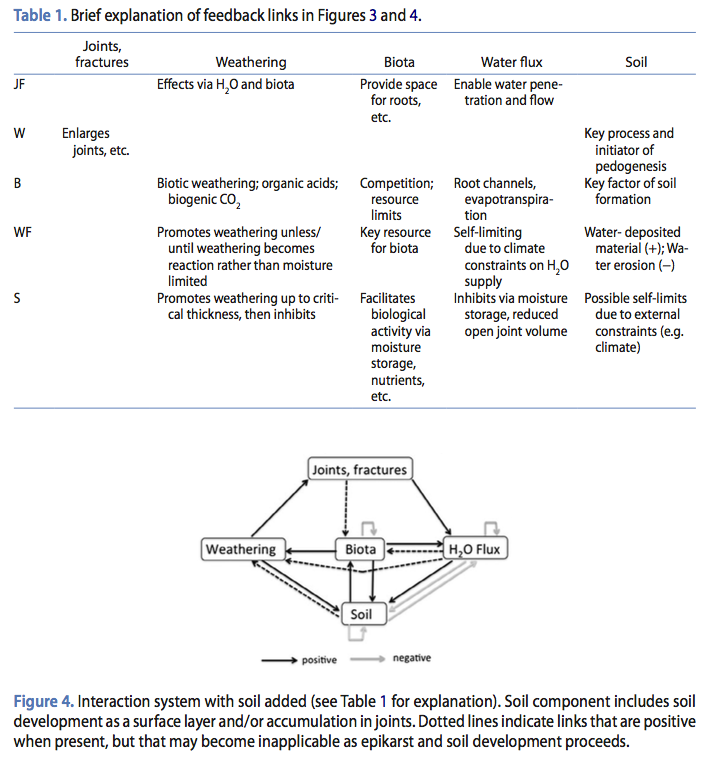
From Phillips, 2018.
The sytem is dynamically unstable by the Routh-Hurwitz criteria. However, the system becomes dynamically stable if the dotted-line links shown are ignored. These links are present if subsurface accommodation space and moisture supply are limiting for biota, and weathering is moisture (rather than reaction) limited, and the self-limits shown in the figure are approached. Dynamical instability implies unstable self-reinforcing growth or acceleration of weathering, joint size, moisture flux, and biological activity. However, when these links are absent – i.e. when root growth or biotic activity is not limited by accommodation space or moisture, and weathering is reaction limited – the system is dynamically stable.
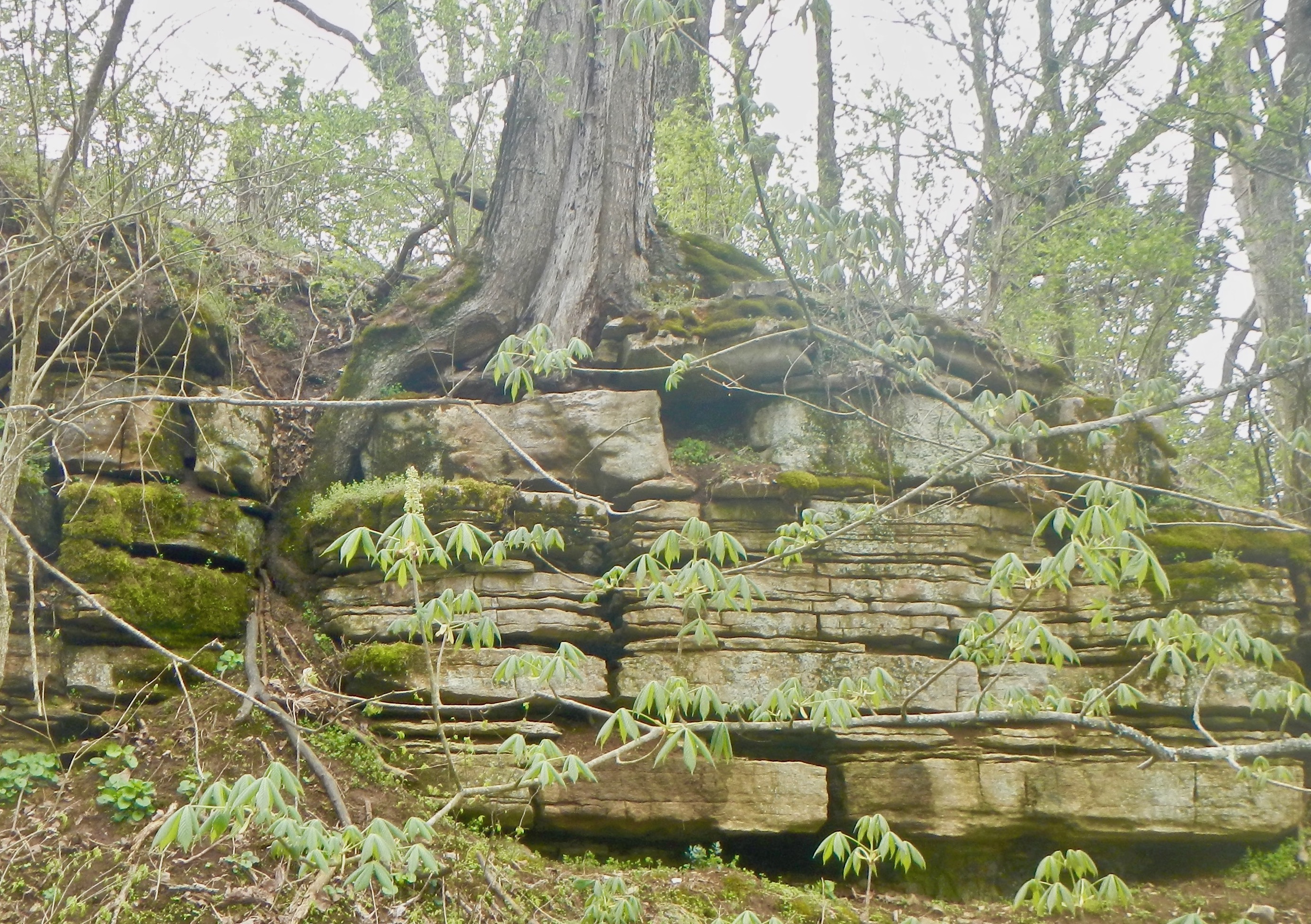
Epikarst, central Kentucky.
Below is a similar system model for non-karst systems. One key difference is a direct positive link between weathering and moisture flux. In karst, moisture flow is dominated by joints, etc., but weathering of non-carbonate rocks often has important influences in increasing porosity and permeability. Another is the self-limiting effect of depletion of weatherable mineral in many rocks, which does not occur in limestone and other karst rocks. In either case water flux may have positive or negative effects on soil development. For the non-karst case, however, the negative link from soil development to moisture flux is absent. In both cases it is assumed that soil development (mainly thickness) exerts a negative influence on bedrock weathering due to increasing buffering of the weathering front from precipitation and surface biological activity (this is not always the case, but changing the link to positive does not change the outcome of the stability analysis).

Like the epikarst system, the non-karst system is dynamically unstable. Also like the epikarst version, the non-karst system is stable if the dotted-line links are removed.
In both cases (epikarst and non-karst) the stability analysis suggests a mode shift for situations where weathering profiles are developing in weathered bedrock. In early stages, regolith is thin or absent, soils are minimally developed, and there is limited below-ground space for roots (and soil fauna). Due to the limited soil cover, moisture is likely to be a limiting factor for biota. Because bedrock is still relatively intact (joints, etc. have not been widened much; porosity is limited), moisture availability is a limiting factor for weathering. Inherent limitations on organisms (factors other than water and space, and metabolic limits) and moisture (climate) have not been approached, at least as related to the weathering zone. Changes—both due to disturbances and ongoing development—tend to be self-reinforcing. Variability—for example, depth to bedrock or the degree of weathering—generally increases. Weathering begets more weathering; biological activity begets more biological activity; and moisture flux begets more water flow, through the network of system interactions.
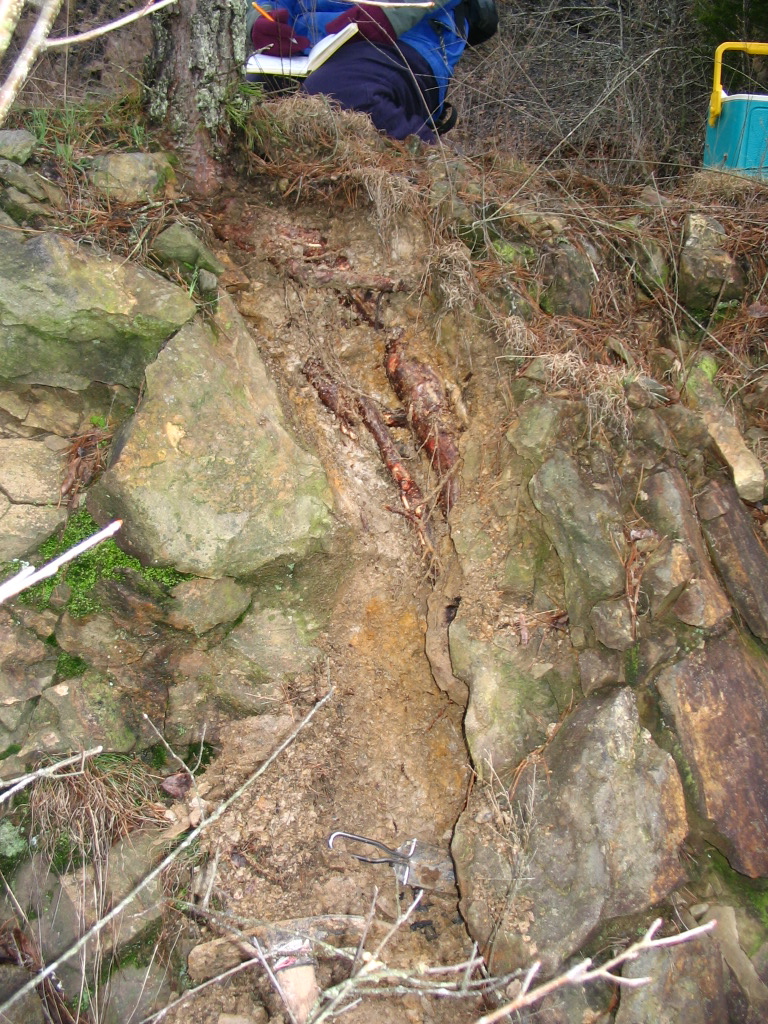
Young weathering profile in sandstone, Arkansas. The rock was exposed by construction 25 years before the photograph was taken.
Later on, however, soils are thicker and more fully developed. Joints and conduits are widened; moisture flows freely. Belowground space and moisture may no longer be limiting factors. Weathering may become limited by weatherable minerals or geochemical kinetics, not moisture; and biota by factors external to the soil and regolith. Moisture may be limited by climatic inputs and/or landscape scale flow patterns. Then the system may become dynamically stable and convergent. Differences in the degree of weathering or the thickness of the profile begin to shrink. Trees and organisms, now firmly rooted in soil, have less effect on weathering. A divergent to convergent, unstable to stable mode shift has occurred.
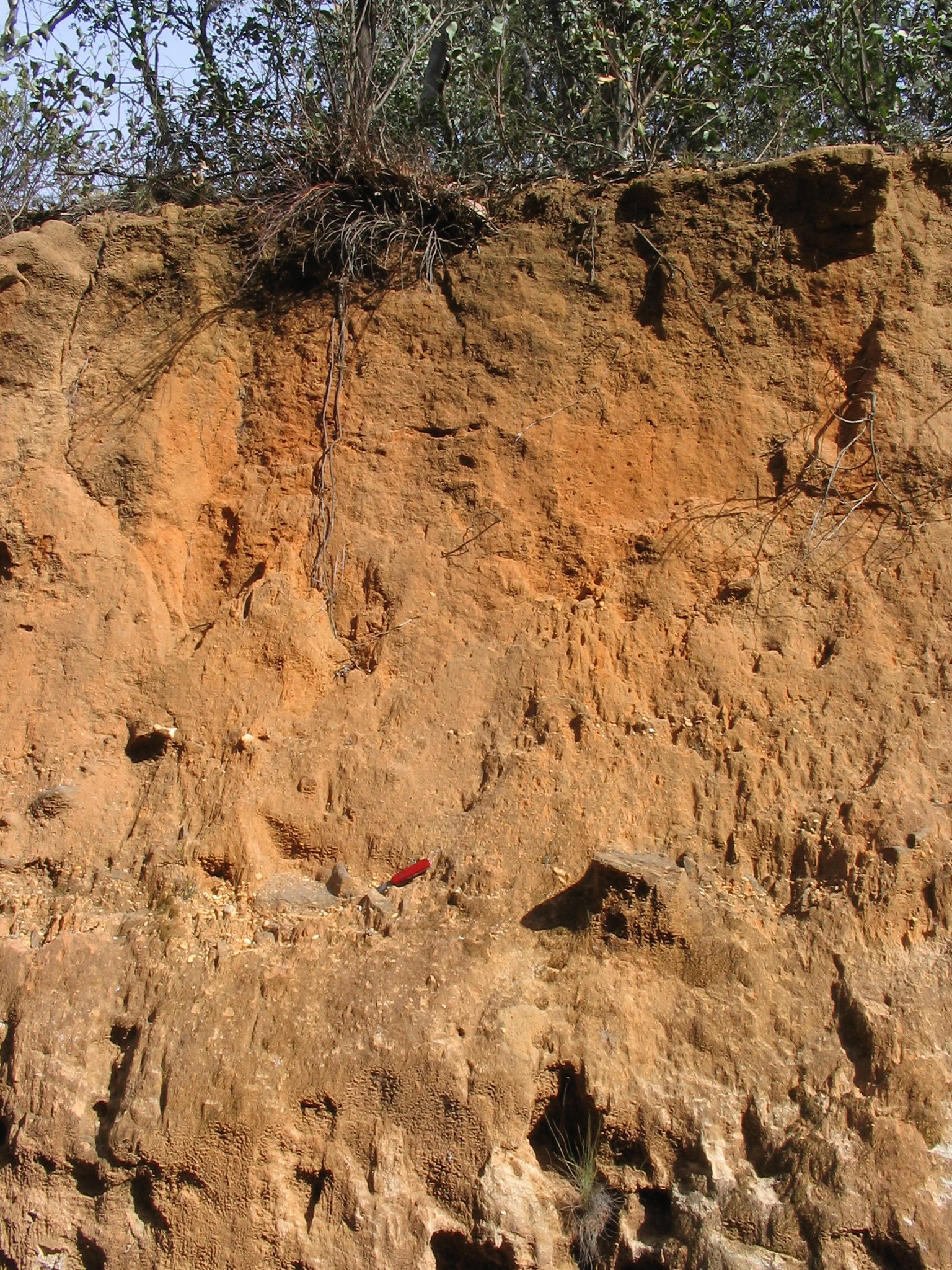
Thick, maturely developed profile in sandstone, NSW, Australia.
The shift is not irreversible. Erosion and denudation can, for example, strip most or all of the soil cover; a lava flow can create a new surface for weathering to begin anew; or glacial ice can bury it, to exhume it again when the ice retreats.
Between clock-resetting events that flip the mode back to divergent, unstable evolution, however, a potential general trend suggests itself, as shown below. During the divergent phase, variability increases up to some maximum, and then declines. I hypothesize that the increase in variability would be steeper due to the net positive feedbacks, and the decrease less steep due to the fact that the mode shift is triggered by the approach to limits in some system components.
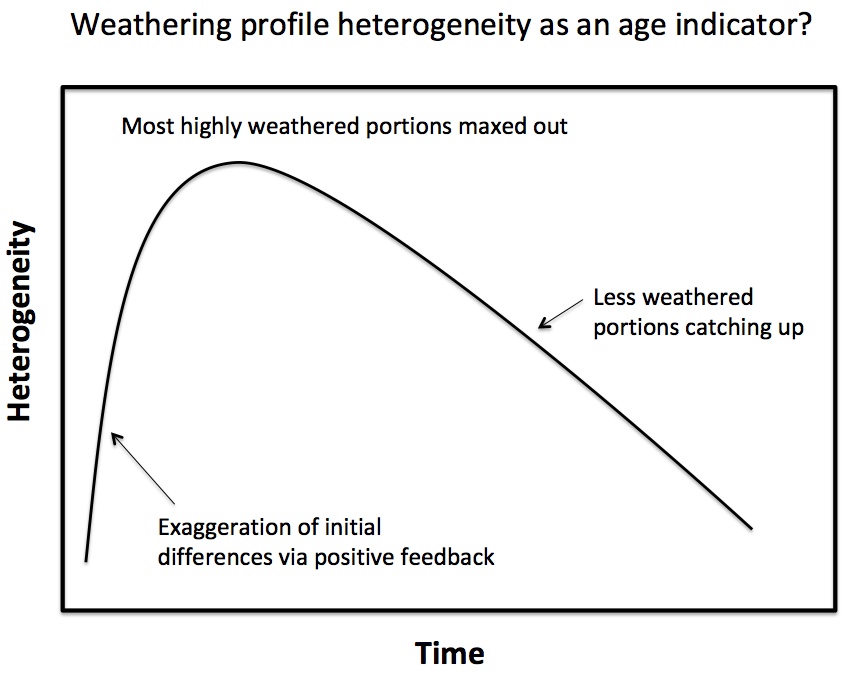
But how to test this hypothesis? I have no doubt that I could develop a realistic, plausible model that reproduces the trends shown in the figure above. I also have no doubt that many others could do the same, likely better and more easily than I. But I am equally sure that any of us could also produce a realistic, plausible model that does not support the hypothesis.
The hypothesis could be confirmed by finding chronosequences long enough to reflect the mode switch and which preserve measurable variability in the phenomena of interest. But falsifying it would be more difficult. If results fail to support the proposed trend, is it because the chronosequence is too short, or does not reflect the mode switch point? Is it due to the well known but unavoidable shortcomings of chronosequences, such as the inability to hold all other factors except time or age constant, and the fact that surfaces or parent materials of different ages will have experienced different histories?
A caveat to this analysis is that it applies to weathering profiles formed mostly, if not entirely, in in situ bedrock. In Phillips (2010), I analyzed the Soil Atlas of Europe (European Soil Bureau Network, 2005), at the time the only comprehensive, detailed, continental scale soil map(s) and inventory. Of the 23 major soil types identified in the atlas, only six are likely to be residual soils derived from bedrock weathering, and three are formed in unconsolidated parent materials such as glacial till or alluvium. Of the remainder, some may be residual or not, and some are unlikely to be. Mature development is a distinct possibility in 11 of the soils, while six are immature by definition. Among the others, mature development is either uncertain or unlikely. Overall, Phillips (2010) estimated that 75% of the European land area consists of taxa where maturely developed residual soils derived from bedrock are unlikely. Intuitively, I suspect this proportion would be smaller on other continents, especially Gondwanan remnants. However, it does show that this analysis—like others based on residual soils formed in weathered bedrock—is not applicable to many of Earth’s regoliths or weathering profiles.
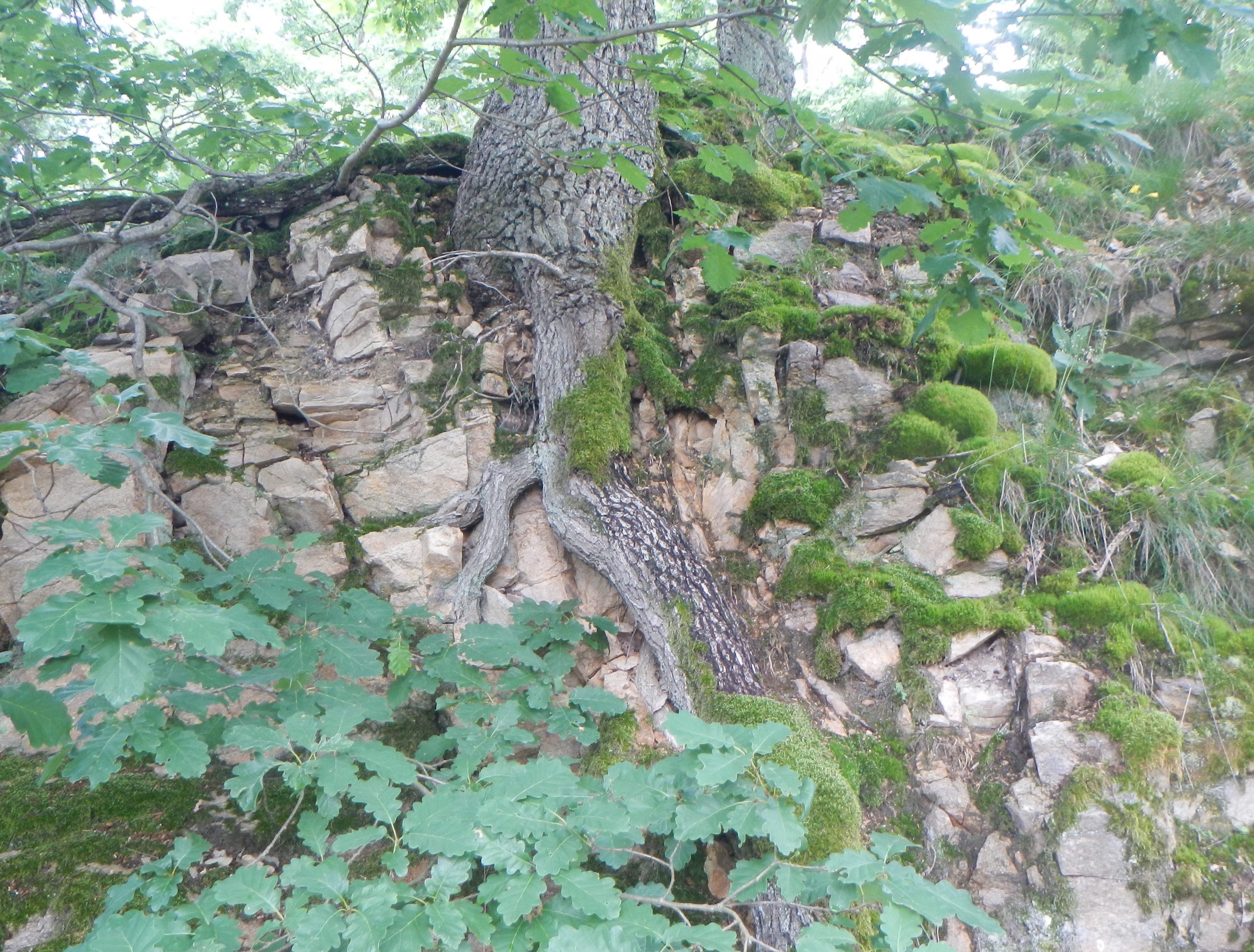
Limestone weathering profile, central Bohemia, Czech Republic
---------------------------
References
European Soil Bureau Network, 2005. Soil Atlas of Europe. European Commission, Brussels.
Phillips, J.D. 2010. The convenient fiction of steady-state soil thickness. Geoderma 156: 389-398.
Phillips, J.D., 2014. Thresholds, mode-switching and emergent equilibrium in geomorphic systems. Earth Surface Processes and Landforms 39: 71-79. DOI: 10.1002/esp.3492
Phillips, J.D., 2018. Self-limited biogeomorphic ecosystem engineering in epikarst soils. Physical Geography 39: 304-328.
--17 November 2020
